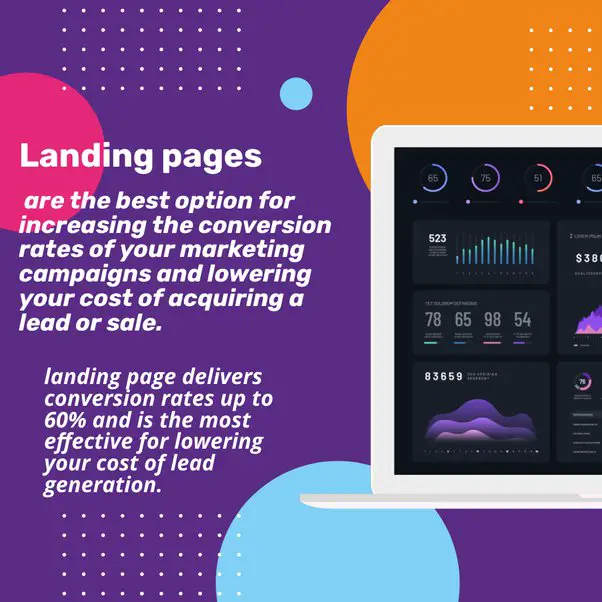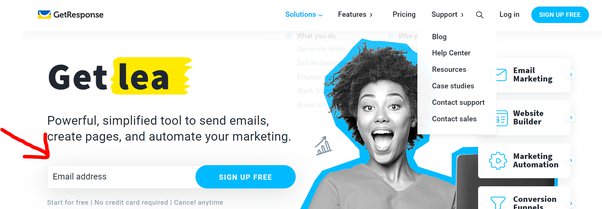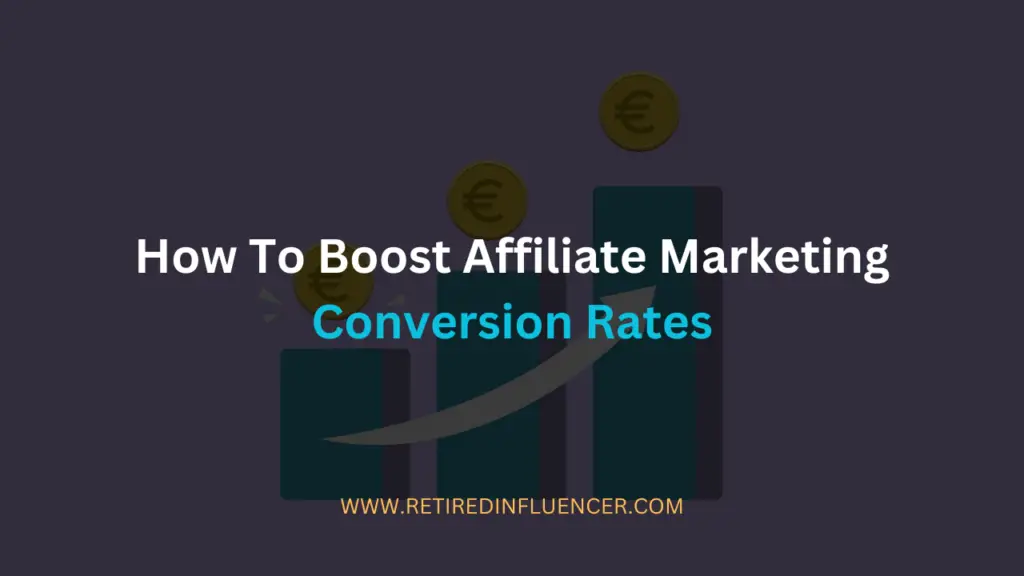Affiliate marketing is a widely used strategy for monetizing websites and blogs. As an affiliate marketer, your success depends on your ability to convert visitors into customers.
To boost your affiliate revenue and maximize returns on investment, it’s crucial to implement effective strategies that improve conversion rates.
That said, in this article, I will be sharing with you proven tips for increasing conversions in affiliate marketing.
Key Takeaways:
- Understand your target audience to optimize your affiliate campaigns.
- Choose the right affiliate programs and products that align with your audience’s interests.
- Create compelling content that highlights the benefits of the products or services.
- Incorporate effective call-to-actions (CTAs) throughout your content.
- Optimize your landing pages for a user-friendly experience.
Table of Contents
Understand Your Target Audience
To increase affiliate sales and optimize affiliate campaigns, it is crucial to understand your target audience.
By conducting thorough market research, you can identify their needs, preferences, and pain points.
This knowledge will enable you to tailor your affiliate campaigns and create content that resonates with your audience, ultimately driving higher conversion rates.
Understanding your target audience starts with gathering data and insights.
Use tools like Google Analytics, social media analytics, and customer surveys to gather demographic information, behavioral patterns, and interests.
Dive deeper into their pain points and challenges by conducting interviews or focus groups, which can provide invaluable insights for crafting targeted content and offers.
“Understanding your target audience is the foundation of effective affiliate marketing. By truly knowing who you are targeting, you can speak directly to their needs and desires, making your promotions more relevant and persuasive.”
Once you have a clear understanding of your target audience, you can optimize your affiliate campaigns accordingly.
Create buyer personas to represent different segments of your target audience, and develop content strategies tailored to their unique characteristics.
This may include creating specific landing pages, blog posts, or social media campaigns that address their pain points and provide solutions.
Benefits of Understanding Your Target Audience:
- Increased relevancy: By understanding your target audience, you can develop content that speaks directly to their needs and interests, increasing the chances of capturing their attention and driving conversions.
- Improved targeting: Knowing your audience enables you to choose the right affiliate programs and products that align with their preferences, ensuring a higher likelihood of sales.
- Enhanced content creation: With a deep understanding of your audience, you can create compelling content that resonates with them, building trust, and authority in your niche.
- Optimized advertising strategies: Understanding your audience allows you to optimize your advertising efforts, targeting the most relevant channels, and delivering personalized messages to maximize engagement and results.
By investing time and effort in understanding your target audience, you can optimize your affiliate campaigns, increase sales, and achieve better conversion rates.
You want to take the time to conduct thorough research, gather insights, and create targeted strategies that will resonate with your audience.
Doing so will set you up for long-term success in the world of affiliate marketing.
| Key Takeaways | Action Steps |
|---|---|
| Conduct thorough market research to understand your target audience’s needs, preferences, and pain points. | Use tools like Google Analytics, social media analytics, and customer surveys to gather valuable data and insights. |
| Create buyer personas to represent different segments of your target audience and develop content strategies tailored to their unique characteristics. | Craft targeted content, such as specific landing pages, blog posts, or social media campaigns, that address your audience’s pain points and offer solutions. |
| Optimize your affiliate campaigns by aligning them with your target audience’s preferences and interests. | Choose the right affiliate programs and products that resonate with your audience, increasing the likelihood of sales. |
Choose the Right Affiliate Programs and Products
Selecting the right affiliate programs and products is crucial when it comes to increasing or driving conversions in your affiliate marketing efforts.
By aligning your offerings with your target audience’s interests and preferences, you can significantly increase the likelihood of generating sales.
Additionally, considering factors such as commission rates, cookie duration, and affiliate program policies can further optimize your results.

Below are some essential tips and strategies to keep in mind:
- 1. Research your audience: Gain a deep understanding of your target audience’s demographics, behavior, and pain points. This insight will help you identify affiliate programs and products that resonate with their needs and desires.
- 2. Seek programs and products with a proven track record: Look for affiliate programs and products that have demonstrated success in the market. Consider their reputation, customer reviews, and overall performance to make informed decisions.
- 3. Evaluate commission rates: Compare commission rates offered by different affiliate programs. Higher commission rates can motivate affiliates to exert greater effort in promoting your products.
- 4. Consider cookie duration: Cookie duration refers to the time period in which you can earn a commission for a referral. Longer cookie durations provide a wider window of opportunity for conversions.
- 5. Review affiliate program policies: Familiarize yourself with the terms and conditions of affiliate programs you are considering. Ensure that their policies align with your goals and strategies.
By implementing these affiliate marketing tips and strategies, you can make informed decisions when choosing affiliate programs and products, ultimately driving higher conversions and maximizing your affiliate marketing success.
Create Compelling Content

When it comes to improving conversion rates in affiliate marketing and any online business, compelling content is key.
By crafting engaging and informative content highlighting the benefits of the products or services you promote, you can capture your audience’s attention and drive higher conversions.
But what makes content compelling?
Firstly, use persuasive language that resonates with your audience. Understand their pain points and address them directly in your content. By showing that you understand and empathize with their needs, you build trust and credibility.
Secondly, incorporate visuals. Humans are visual creatures, and adding relevant images, videos, or infographics to your content can make it more engaging and memorable. Visuals help to illustrate your points and enhance the overall reading experience.
Lastly, provide valuable insights. Share actionable tips, practical advice, or expert opinions that your audience can implement in their own lives. By offering real value, you position yourself as an authority in your niche and establish a loyal audience.
“Compelling content doesn’t just inform, it captivates. It goes beyond the ordinary to create an emotional connection with the reader, compelling them to take action.”
Remember!
The goal is to optimize your affiliate campaigns, and compelling content is a powerful tool to achieve that.
That said, by following these strategies, you can create content that not only drives conversions but also builds a loyal following and maximizes your affiliate revenue.
- PS. I wrote another article where I share with you some effective tips on how to increase affiliate sales and traffic. Check it out
Utilize Effective Call-to-Actions
When it comes to boosting your conversion rates in affiliate marketing, effective call-to-actions (CTAs) play a crucial role.
By strategically placing clear and compelling CTAs throughout your content, you can guide visitors to take the desired actions that lead to conversions.

Here are some key tactics to optimize your call-to-action:
- Use actionable language: Incorporate strong verbs and compelling phrases that encourage users to take immediate action. For example, instead of a generic CTA like “Learn More,” use something like “Get your exclusive discount now!” This creates a sense of urgency and prompts users to click.
- Create a sense of urgency: Emphasize limited-time offers, exclusive deals, or limited stock availability to create a sense of urgency in the minds of your audience. Using phrases like “Limited Time Offer,” “Limited Stock,” or “Exclusive Deal” can entice users to take action quickly before they miss out.
- Make CTAs visually prominent: Design your CTAs in a way that they stand out from the rest of the content. Use contrasting colors, larger fonts, or eye-catching buttons to make CTAs impossible to miss. This makes it easier for users to spot them and increases the chances of clicks and conversions.
By implementing these conversion rate optimization strategies and affiliate marketing conversion tactics, you can effectively leverage call-to-actions and drive higher conversion rates.
Remember to continuously test and monitor the performance of your CTAs to further refine and improve their effectiveness.
Optimize Landing Pages

Landing pages play a critical role in converting visitors into customers.
To maximize conversions, it is essential to optimize your landing pages by focusing on three key areas:
- A clear and concise message
- A clean design
- And a user-friendly experience
1. Clear and Concise Message
The message on your landing page should be straightforward and communicate the value proposition of the product or service you are promoting.
Use persuasive language to highlight the benefits and address any pain points your target audience may have.
Keep the content concise, avoid lengthy paragraphs, and use bullet points or subheadings to break up the information.

2. Clean Design
A clean and visually appealing design helps create a positive first impression and keeps visitors engaged.
Use a simple layout with ample white space to make the content easy to read.
Incorporate compelling images, videos, or infographics that enhance the message and capture attention.
Additionally, use fonts and colors that align with your branding and ensure readability.
3. User-Friendly Experience
Ensure that your landing page provides a seamless user experience.
Make it easy for visitors to navigate through the page by incorporating clear and prominent call-to-action (CTA) buttons.
Consider the placement, size, and color of the CTA buttons to make them stand out.
Optimize your landing page for mobile devices to cater to users accessing the page from smartphones or tablets.
In addition to these optimization strategies, conducting A/B tests can provide valuable insights into what elements of your landing page are most effective at driving conversions.
Test different variations of headline and subheadline copy, images, CTA placements, and button colors to determine which combinations yield the highest conversion rates.
A well-optimized landing page can significantly improve your conversion rate and help you achieve better results from your affiliate marketing campaigns.
Example of A/B Test Results:
| Variation | Headline | Conversion Rate |
|---|---|---|
| A | Discover the Secrets to Financial Freedom | 12.5% |
| B | Unlock Your Financial Potential Today | 15.2% |
| C | Take Control of Your Finances and Start Thriving | 14.8% |
In this example, Variation B with the headline “Unlock Your Financial Potential Today” yielded the highest conversion rate of 15.2%.
This demonstrates the importance of testing different elements to find the most compelling combination that resonates with your target audience.
By implementing these landing page optimization strategies and leveraging A/B testing, you can improve your conversion rate and optimize your affiliate marketing campaigns for better results.
- Recommended Reading: How To Use Email Marketing To Increase Affiliate Sales
Conclusion
Improving conversion rates in affiliate marketing requires a strategic approach. By understanding your target audience, selecting the right programs and products, creating compelling content, utilizing effective call-to-actions (CTAs), and optimizing landing pages, you can boost your affiliate revenue and achieve better conversion rates.
Start by conducting thorough market research to gain insights into your target audience’s needs and preferences.
This understanding will allow you to tailor your affiliate campaigns and create content that resonates with your audience, increasing the likelihood of conversions.
Create compelling content highlighting the benefits of the products or services you promote.
Use persuasive language and incorporate visuals to capture your audience’s attention and inspire action.
Remember to place clear and compelling CTAs throughout your content, guiding visitors to take the desired actions.
Optimize your landing pages to ensure a clear and concise message, a clean design, and a user-friendly experience.
Experiment with different elements through A/B testing, such as headlines, images, and CTA placements, to maximize conversions.
Consistency is key. Apply these tips consistently and track your results to refine your strategies further.
By implementing these tactics starting today, you can elevate your affiliate marketing success and boost your affiliate revenue.
FAQ
How can I improve conversion rates in affiliate marketing?
To improve conversion rates in affiliate marketing, it’s important to understand your target audience, choose the right affiliate programs and products, create compelling content, utilize effective call-to-actions, and optimize landing pages. These strategies will help you maximize your affiliate revenue and achieve better conversion rates.
Why is it important to understand my target audience?
Understanding your target audience is crucial because it allows you to create content and optimize your affiliate campaigns specifically tailored to their needs, preferences, and pain points. By catering to your audience’s interests, you increase the likelihood of driving conversions and maximizing your affiliate sales.
How do I choose the right affiliate programs and products?
When choosing affiliate programs and products, consider factors such as their relevance to your target audience, their track record of success, commission rates, cookie duration, and affiliate program policies. Look for programs and products that align with your audience’s interests and have a proven track record of converting well.
What can I do to create compelling content?
To create compelling content, focus on highlighting the benefits of the products or services you are promoting. Use persuasive language, incorporate visuals such as images or videos, provide valuable insights, and craft engaging narratives that resonate with your audience. Compelling content is more likely to capture your audience’s attention and drive conversions.
How can I make my call-to-actions more effective?
To make your call-to-actions more effective, make sure they are clear, compelling, and visually prominent. Use actionable language that prompts visitors to take specific actions, create a sense of urgency, and ensure that your CTAs stand out from the rest of the content. Effective CTAs can significantly increase your conversion rates.
Why should I optimize my landing pages?
Landing pages play a crucial role in converting visitors into customers. Optimize your landing pages by ensuring a clear and concise message, a clean design, and a user-friendly experience. Conduct A/B tests to experiment with different elements such as headlines, images, and CTA placements to maximize conversions and improve your overall conversion rate.
What should I do to apply these tips consistently and track results?
To apply these tips consistently and track your results, establish a structured affiliate marketing strategy. Take note of your key performance indicators, such as click-through rates and conversion rates, and regularly monitor them. Make data-driven decisions, iterate on your strategies, and continuously optimize your approach based on the insights you gather.






